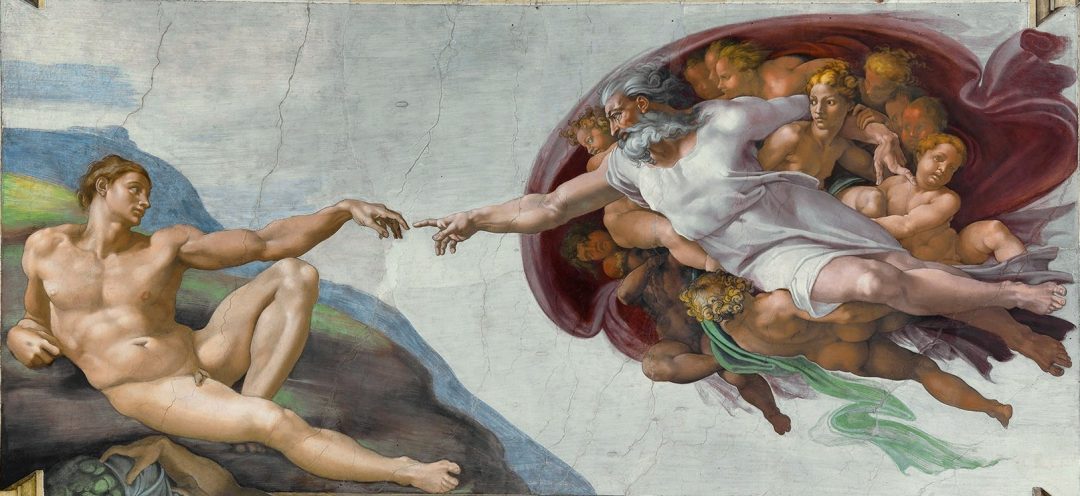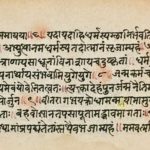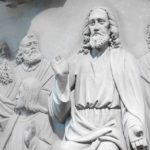It is possible from a simple reading of Genesis to accept that God created two sets of human beings, the first as part of the creation of the universe in 6 days (Gen 1.27) and the second, perhaps eons later, within the confines of the Garden of Eden (Gen 2.7). Such a reading irons out many textual inconsistencies and provides answers to specific scientific questions regarding fossils and the geology of the earth.
Genesis 2.1 begins: “Thus the heavens and the earth were completed in all their vast array” (NIV translation) meaning the universe had planets, stars, moon, birds and beasts and men already in place, but no Eden. Only then does the Bible go on to describe the special garden God created, and only after that is Adam formed from the dust.
The text makes it clear that “the Lord God had planted a garden in the east” giving the Garden of Eden a special location within creation. This suggests that the Garden of Eden was established as a separate entity within the context of a pre-existing environment. Within the artifice of creation, God chose to construct a special place where he wished to place a special man who, under His grace, would be immune from the normal life-cycle of the rest of the planet.
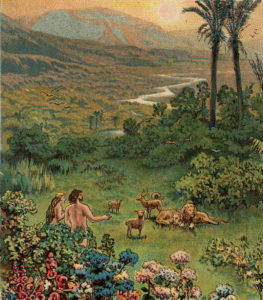 So when we read “And the Lord God formed man from the dust of the ground” (Gen 2.7) we can take this to be a new man, separated from the first wave of men. This does not interfere with Adam´s primary role. Even if we accept him as a later addition to the human race, he can still be viewed as the first man in the sense that he is the first to be favored by God and the first to be endowed with a perfect life. Biblically, this is consistent with the tone of the Old Testament as a whole which throughout shows God marking out His favorites for special treatment, the chosen race themselves, for example; the twelve tribes of Israel were descended directly from Adam and shared his special status. From the start, they were set apart from other races, just as Adam was.
So when we read “And the Lord God formed man from the dust of the ground” (Gen 2.7) we can take this to be a new man, separated from the first wave of men. This does not interfere with Adam´s primary role. Even if we accept him as a later addition to the human race, he can still be viewed as the first man in the sense that he is the first to be favored by God and the first to be endowed with a perfect life. Biblically, this is consistent with the tone of the Old Testament as a whole which throughout shows God marking out His favorites for special treatment, the chosen race themselves, for example; the twelve tribes of Israel were descended directly from Adam and shared his special status. From the start, they were set apart from other races, just as Adam was.
This theory is neat because a) it helps to explain the long timescale of history which science, based on the fossil and geological record, insists is much longer than the short genealogy of the Adam-David-Jesus line; b) it allows for the existence of dinosaurs and other races of men of all ethnic origins, and c) it explains the necessity of the arrival of the Savior, Jesus Christ, whose role was to spread the good news about the death of sin to all corners of the world and be “a light for the Gentiles” (Isaiah 42.6). Who were the Gentiles if not the descendants of the first wave of humans, unenlightened and beyond God´s protection until the arrival of Jesus? Moreover, if the Garden of Eden contained the entirety of the planet´s inhabitants right at the beginning of time, where did the inhabitants of the Land of Nod come from (Gen 4.16), and who was Cain´s wife (Gen 4.17)?
“Adaptation” and “Evolution”
This theory also allows for “adaptation” and “evolution” to co-exist side by side with God´s creativity. We can easily assimilate the one with the other by saying that God alone creates new species from nothing, but He allows for adaptation to occur within the individual members of each species. There are countless examples in nature of phenomena which could not have come about by evolution alone. The random chance factor of natural selection is not enough to explain the billions of wondrous examples of design and function, and this threatens the credibility of evolutionary theory. But if we accept that evolution and adaptation are possible within species as part and parcel of God´s plan, all the problems go away.
Pre-Adamic theories are not new. As early as 1655 the Frenchman Isaac La Peyrère toyed with the idea of a race of humans pre-dating Adam, but he, and many others following him found it necessary to make Adam the offspring of these earlier races rather than seeing him as a second wave of human creation, straight from the dust. Seeing Adam as a descendant of these earlier tribes of men leads to all sorts of theological problems, not the least of which being that we are told that Adam was the first of the line which led to Jesus. He was also the root of man´s fall from grace. These problems are overcome if we simply suggest that God made Adam as a separate and exclusive exercise.
Why could God not make a second man from the dust?
Why not a million, each with different skin tones and facial characteristics? Genesis 4 confirms there must have been other humans in the world, otherwise, Cain´s wife would have been his sister! This takes nothing away from Adam. What makes him unique among mankind is that he was the only human to be peculiarly blessed and favored above all others in creation. Compare his status to that of the inhabitants of the land of Nod who were “restless wanderers” (see Gen 4.12), completely lacking any of the privileges bestowed upon Adam.
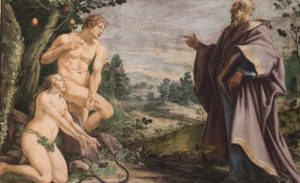 So by Chapter 4 three separate states of humanity have been described, the most blessed being the Garden of Eden, an eternal life without sin or death where mankind is fully provided for; the next lies beyond the Garden of Eden which, though far from perfect, still benefits from God´s grace and protection (e.g. Gen 3.21, 4.4 shows that God was still looking out for Adam and Eve even after the fall); a third is illustrated by the land of Nod (replicated throughout the planet) where men not only work hard for a living but seem to have a lack of purpose and direction because, as restless wanderers, they do not know God.
So by Chapter 4 three separate states of humanity have been described, the most blessed being the Garden of Eden, an eternal life without sin or death where mankind is fully provided for; the next lies beyond the Garden of Eden which, though far from perfect, still benefits from God´s grace and protection (e.g. Gen 3.21, 4.4 shows that God was still looking out for Adam and Eve even after the fall); a third is illustrated by the land of Nod (replicated throughout the planet) where men not only work hard for a living but seem to have a lack of purpose and direction because, as restless wanderers, they do not know God.
When Paul talks about death entering the world through sin, (Romans 5.12) he refers only to Adam. The rest of creation, beyond the Garden of Eden, already experienced a natural life-cycle of birth-maturity-death, which still in God´s eyes was seen as “good” (good, not perfect) for death in itself is not evil, since it is a return to God´s heaven, but death through sin is evil, where sin is disobedience to God. This was Adam´s curse. Disobedience to God was peculiar to Adam because God´s law only applied to him. Where there is no knowledge of God´s law, there is no sin. It was only when Adam ate from the tree of good and evil did he become aware of a state beyond God´s law and at that moment knew sin, and it was only when Cain was sent to live in the land of Nod, and he began spreading the word of God, did sin enter the world at large.
This theory makes for an interesting debate and it is worth considering if only as a way of resolving the centuries-old dispute between two opposing doctrines. By making Adam a new creation, after the 6-day event, an entirely new man within the confines of a special garden, in the midst of numerous continents of pre-created men, many scientific objections can be successfully addressed without compromising the integrity of the original biblical text.

